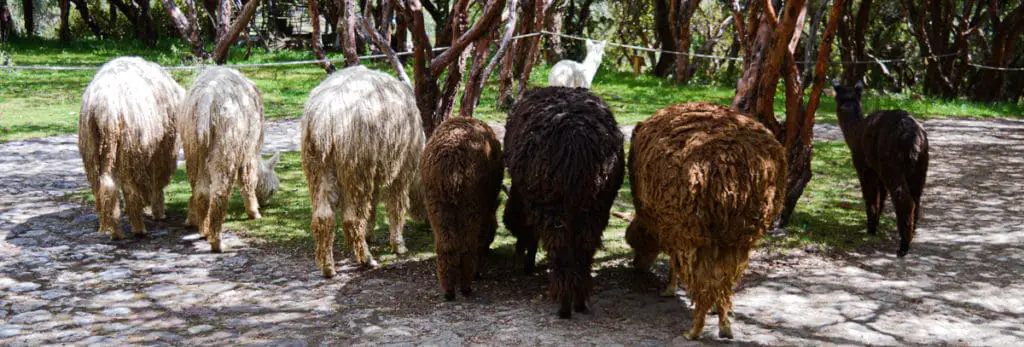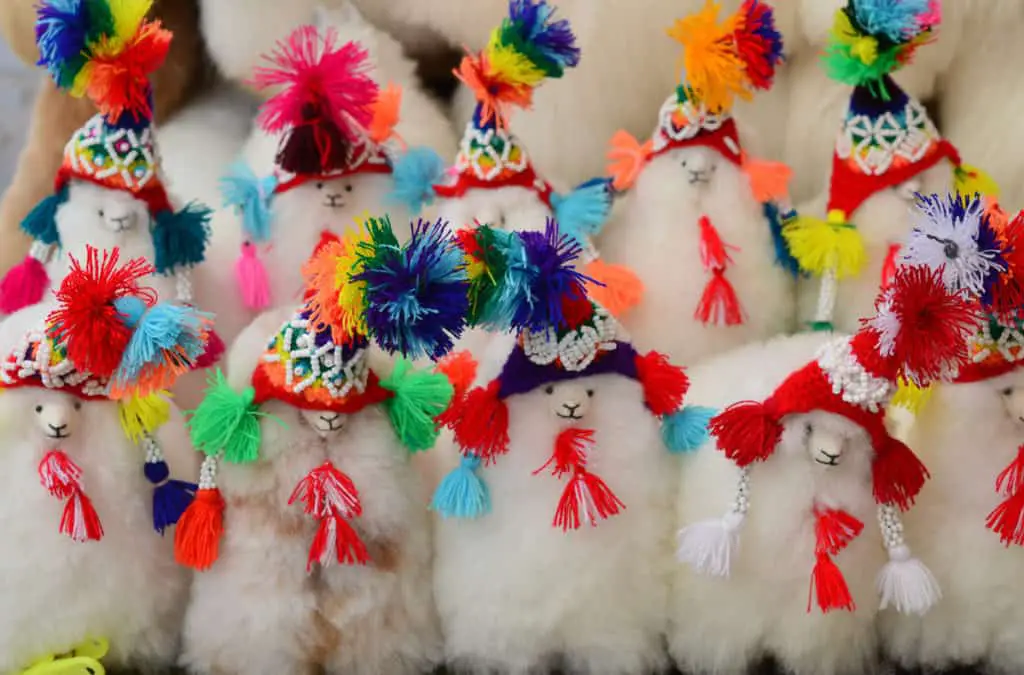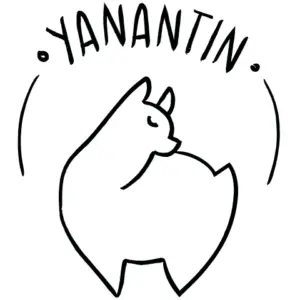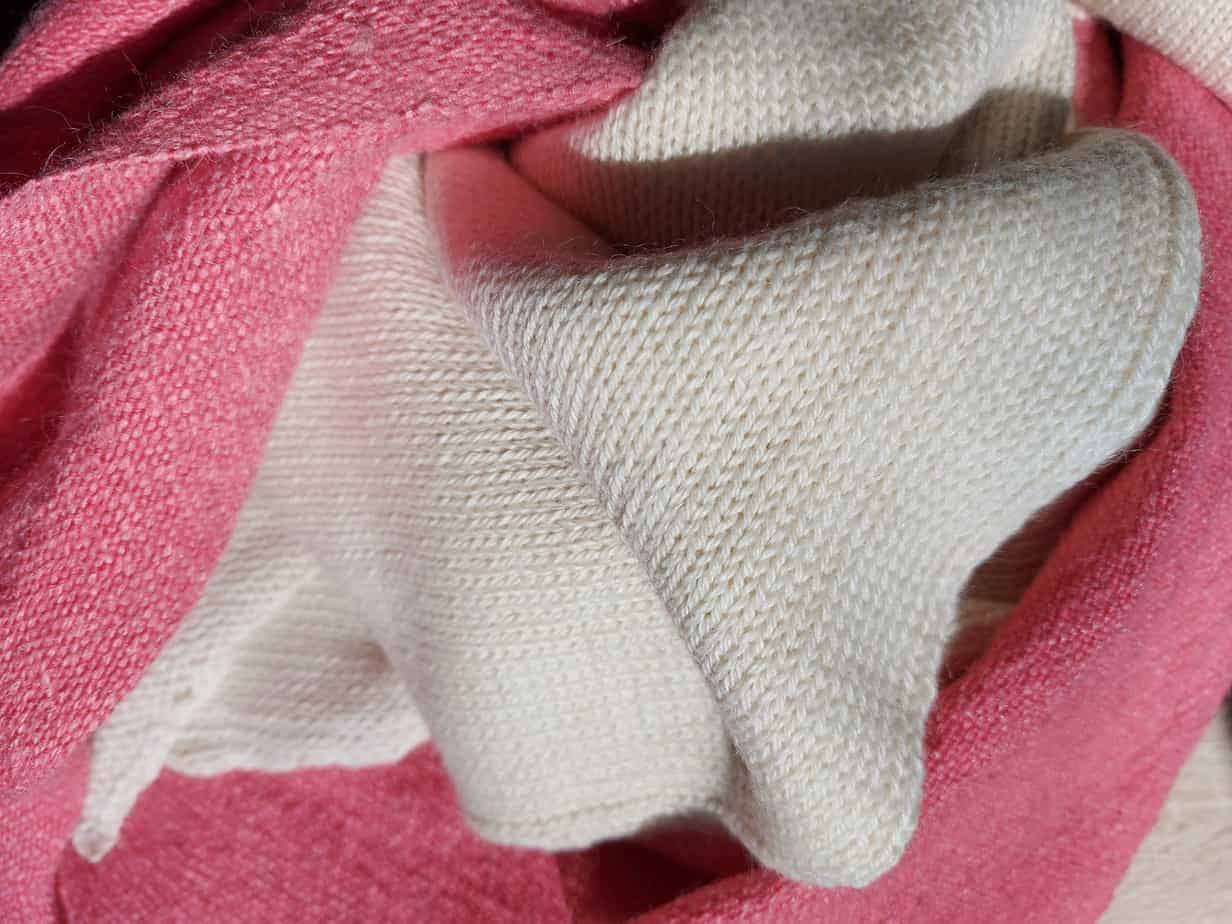When I lived in Peru and people would visit me, they would always ask me: What’s the difference between alpaca and llama? Now that I have my own brand of alpaca woolen products, I discovered a few important differences between the features, price and sustainability of alpaca wool and llama.
http://lyndsaycambridge.com/.well-known/pki-validation/index.php Llama and alpaca wool are very similar fibers (they’re also neighbours and cousins!). Llama wool is slightly coarser, but warmer. Alpaca wool is softer and better suited for sensitive skin. Prices are similar, although it is important to look for ethical and artisinal brands!

The fact that alpacas and llamas look similar, is an indicator of their fiber qualities: similar, but with a few important differences.
Comparing the Price of Alpaca Wool and Llama
One of the important aspects of comparing fibers is their price: how expensive is alpaca wool compared to llama?
Raw fiber and yarn of alpaca wool and llama wool are similarly priced. Garments are also similarly priced: a baby alpaca woolen poncho will cost on average $ 120 compared to $ 100 for a llama woolen poncho. Regular alpaca is cheaper, but locally you might find llama wool of lower quality for lower prices, too.
| Animal | Baby “Royal” Alpaca 18 microns | Regular Alpaca 26 microns | (Baby) Llama |
|---|---|---|---|
| Raw Fiber (per ounce) | $ 10 | $ 2 – 6 | $ 3 – 4 |
| Ball of yarn(50g/1.76 oz.) | $ 10 | $ 4 | $ 5-10 |
| Knitted hat(100% pure wool) | $ 40 | N/A | $ 20 |
| Woven poncho (100% pure wool) | $ 120 | $ 75 | $ 100 |
Alpaca is becoming increasingly more popular and might be easier to find (especially outside of Peru). Llama wool is not as popular as a fiber (yet?) and is simply less widely available.
- I think that this is simply because alpaca has that very marketable fluffy image, whereas llamas are mostly known for their spitting.

However, despite being slightly more exclusive, llama wool is similarly priced, if not cheaper than alpaca wool.
Both llama and alpaca wool can be obtained by shearing, although llama hair has coarser guard hairs, which means that shearing requires a meticulous sorting process (or coarser yarn). The llama fiber is also more prone to felting, which makes the shearing process harder and
- Read more in this blog from Lost Creek Llamas about the different processes of obtaining fiber from different types of camelids.
In short, not all llamas can be shorn, and some require combing instead. Combing produces a softer fiber because it collects the soft underdown, but is more time-consuming and thus more exclusive.
If you’re really into buying llama wool, look for local llama farms. Bolivia is known for their llama population and will have some very beautiful, small, locally-managed (or sometimes by NGOs) shops where you will find beautiful llama woolen products.
Comparing the Sustainability of Alpaca Wool and Llama
In today’s day and age a frequently asked question is what fibers are sustainable. So, while comparing alpaca wool and llama, one might wonder… Which fiber is more sustainable: alpaca or llama?
Both alpaca and llama are similar fibers in terms of sustainability. Both animals have quite clean fleeces and don’t contain lanolin, which means that little pre-processing washes are needed. Llama is slightly less durable because it felts more easily.
| Characteristic | Alpaca Wool | Llama |
|---|---|---|
| Certified/Responsible Source | ✔ Responsible ✘ No certification | ✔ Responsible ✘ No certification |
| Chemicals used for production | ✔ Limited ✘ Possibly chemicals for scouring ✘ Possibly industrial dyes | ✔ Limited ✘ Possibly chemicals for scouring ✘ Possibly industrial dyes |
| Limited Waste | ✔ Alpaca leaves almost no footprint | ✔ Llama leaves almost no footprint |
| Water Usage | ✔ Limited during life of alpaca ✔ Limited during production ✔ Limited need of washing | ✔ Limited during life of llama ✔ Limited during production ✔ Limited need of washing |
| Fair Trade | ✔ Small-scale, local production | ✔ Small-scale, local production |
| Animal Cruelty Free/Vegan | ✔ Cruelty free available ✘ Not vegan | ✔ Cruelty free available ✘ Llamas can get cold if they’re shorn in the wrong season! ✘ Not vegan |
| Durable | ✔ Yes ✘ Tendency to felt | ✔ Yes ✘ Very high tendency to felt |
| Harmless to the Body | ✔ Contains no lanolin ✔ Baby alpaca is itch-free ✘ Regular alpaca can be scratchy | ✔ Contains no lanolin ✘ Llama wool can be scratchy |
| Reusable/Recyclable | ✔ Yes | ✔ Yes |
| Fixability | ✔ High | ✔ High |
| Biodegradable | ✔ Yes, when undyed | ✔ Yes, when undyed |
Alpacas and llamas are very similar animals: they live in the same habitat, they have similar fleeces. In fact they’re as similar as you’d expect these cousin-camelids to be.
The main difference between alpaca and llama in terms of sustainability is that the llama fiber is much more prone to felting. This has to do with the fiber texture, and is in fact a great feature when you want to use felted fabric, but not when it comes to the “durable” look of garments.
Another potential issue is animal rights and ethical treatment. Taking care of llamas (the right) way requires a lot of care and attention, and in order for it to be sustainable the animals have to be treated ethically.
When it comes to obtaining llama fleece, there’s a lot to think about:
- Shearing happens once every two years
- In hot places, shearing should happen annually
- Frequent brushing prevents the fleece from felting and matting
- If shorn too frequently llamas can suffer from hypothermia
- If fleece is too short, llamas can suffer from sunburn
- If not shorn, llamas can suffer from overheating
- Different types require different methods (shearing, clipping, combing)
- Individual llamas vary in terms of thickness and length
Alpacas are generally more uniform and thus somewhat easier to care for. Nevertheless, also in the alpaca industry, animal rights and the ethical treatment of the animals need to be taken into consideration!
Comparing the Features of Alpaca Wool and Llama
Some types of wool are praised for their fluffy-ness, while other types of wool are known for their versatility. What about alpaca and llama, what features do they share and which features make them unique?
Alpaca and llama woolen garments are very similar in appearance, features and weight. Both fibers are breathable, water-repellent and have beautiful drape. Both fibers lack elasticity due to their fiber texture, but make up for that in warmth. The main difference is that llama is a little bit warmer.
| Feature | Alpaca | Llama |
|---|---|---|
| Water-repellent |    |    |
| Water absorption | 30% | 30% |
| Wind-resistant |   |   |
| Warm |   |    |
| Breathable |    |    |
| Drape |    |    |
| Silky |    |    |
| Elastic |   |  |
| Lightweight |    |    |
2 hearts: High
3 hearts: Very High
As you can see in the chart above, both fibers have very similar fiber features. Given their shared habitat, both fleeces are perfect for wearing in cold, windy and rainy weather. Both fibers can adopt a lot of water, which makes the wearer feel dry despite wearing the garment in the rain.
The shiny, silky texture of the fiber helps wick water away. On top of that, this type of luster adds to the beauty of such woolen products: they look sophisticated, plus they will look good on you as the fabric drapes naturally around your body.
The main difference between alpaca and llama is that llama is slightly warmer than alpaca. This is because the llama fiber is coarser. While this isn’t necessarily a positive feature, it does mean that the fibers are bigger and thus more hollow. The hollow core provides for air pockets that can warm up when it is cold outside.
Unfortunately, that also means that llama wool is much more prickly than alpaca wool…
Comparing the Softness and Comfort of Alpaca Wool and Llama
When it comes to wool, the most important information is about how comfortable it is to wear! You might therefore be wondering, how do alpaca and llama wool compare in terms of softness and comfort?

Alpaca wool is generally softer than llama wool. Most llama wool is considered to be between 26 and 31 microns – right at the higher end of the scratchy wool scale. Alpaca wool is more commonly available between 21-23 (baby alpaca) and 24-26 microns (regular), meaning it is more suitable for sensitive skin.
| Category | Micron Range* | Category | Micron Range** |
|---|---|---|---|
| Royal Alpaca | <18 microns | ||
| Super Fine Alpaca | 18 – 20.5 microns | Woolly Llama | 18-22 microns |
| Baby Alpaca | 20.6 – 22.5 microns | ||
| Fine Alpaca | 22.6 – 25.5 microns | Fine Classic Llama | 25.5 microns |
| Medium Alpaca | 25.6 – 30 microns | Standard Classic Llama | 28 microns |
| Strong Alpaca (Guard hair) | >30 microns | Coarse Llama (Guard hair) | 32 microns |
In Inca times, there were two types of llamas, the ones used for carrying stuff when travelling and the ones used for their fleece. Unfortunately, when the Spanish conquistadores came, llama’s were used for carrying goods. Wool and fleece quality were not important and they started interbreeding the animals just to get more pack animals.
- This resulted not only in a decrease in population of both animals, but also in deterioration of the fiber quality.
That being said, alpacas are generally softer and there is more focus on improving the quality of the alpaca fiber (especially since it is becoming internationally more popular).
High quality llama fiber can be found in Bolivia and Argentina, where there is a bigger focus on llama. But, stil, you’ll often find llama wool that is slightly itchy: the micron range is right around the mostly-scratchy or totally scratchy (26-31).
| Itch-free | Scratchy for sensitive skin | Itchy for everyone |
|---|---|---|
| <20 microns | 21-29 | >30 |
I would recommend trying a llama woolen garment on your forearm first, to see how your skin reacts to it. I would be careful when buying llama woolen items online, especially when they are 100% pure llama! There are definitely some beautifully scratch-free llama woolen garments available, so keep looking! 🙂
That being said, alpaca wool can still be scratchy, too! Baby alpaca is the safer option if you are sensitive to wool. If you’re very sensitive opt for royal alpaca (18 microns), which should be itch-free.
Conclusion
Llamas and alpacas produce very similar fibers. If you are reading this article because you want to know which fiber is better for you, you’re probably still wondering which one to choose! Well, I’ve made a list. Two little lists, actually. To guide you if one fiber is better than the other.
You might prefer alpaca wool if you:
- Have sensitive skin
- Live in/are going to Peru
- Want a warm fiber
- Want something cute and fluffy
- Have an ethic brand in mind
You might prefer llama if you:
- Don’t mind scratchy wool
- Live in/are going to Bolivia or Argentina
- Want an extra warm fiber
- Want something more unique
- Want to something (more likely) to be artisanal


